News
Food industry – The importance of food safety and hygiene
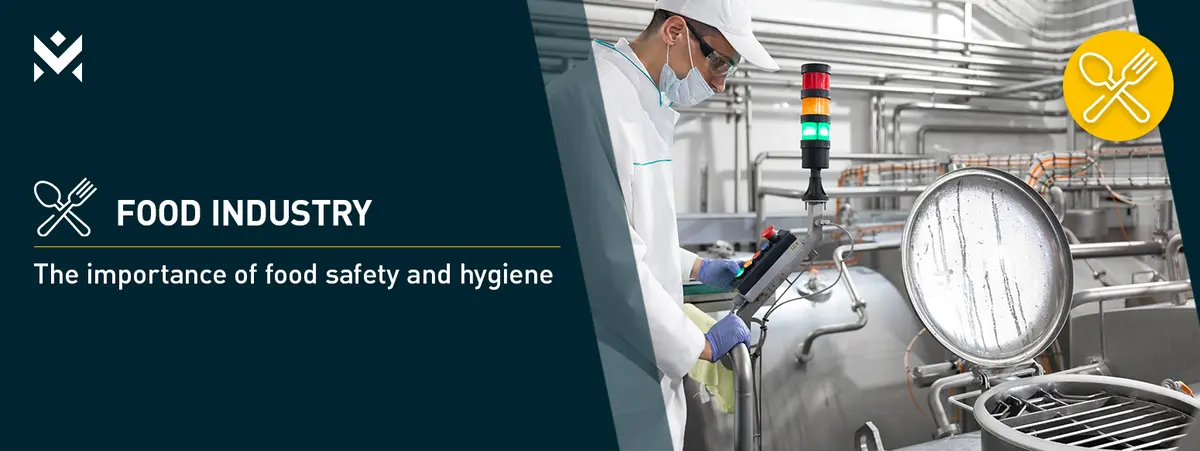
Have you ever wondered what has to happen before your meal is safely on your plate? After all, there is a whole process that goes into making sure our food is free of harmful bacteria, viruses and contaminants. From the farmer planting the crops to the moment you prepare a tasty dinner for your family, every stage in the food chain is essential for food safety.
This article provides an understanding of what food safety means and why it matters. It highlights key hazards within the food industry and explains why hygiene plays such an essential role. In addition, we discuss the use of color coding in the food industry and provide recommendations for appropriate PPE to protect workers and ensure hygiene.
Food safety refers to the measures and conditions necessary to ensure that food is safe for consumption and does not pose health risks. This includes a wide range of activities and procedures that ensure the safety and quality of food, from production to consumption.
Why is food safety essential?
Food safety is essential for several reasons. It prevents foodborne illness and outbreaks, protects vulnerable groups such as children and the elderly, and ensures that consumers have confidence in the food supply. In addition, it promotes international trade by meeting global standards. It also reduces food waste through proper storage and processing, contributing to sustainability. In short, food safety contributes to our health, economic stability and the environment.
Major hazards in the food industry are:
- Biological hazards: Microorganisms such as bacteria, viruses, fungi and parasites that can cause food-related illnesses.
Suitable PPE: Disposable gloves, hair and beard nets, mouth caps, and protective coveralls to prevent contamination.
- Chemical hazards: Unintended chemicals such as pesticides, detergents, additives and heavy metals that can contaminate food.
Suitable PPE: Chemical-resistant gloves, safety glasses, and respiratory masks to avoid inhalation or skin and eye contact.
- Physical hazards: Foreign objects such as glass, metal, plastic and other materials that may accidentally enter food.
Suitable PPE: Cut-resistant gloves, protective eyewear, and metal detectable garments.
It is essential that food processors use and comply with appropriate PPE to minimize risks to employees and consumers.
Hygiene
Hygiene in the food industry is vital to ensure food safety and quality. It includes strict adherence to cleaning protocols, personal hygiene of employees, and keeping equipment and work areas clean. Good hygiene practices minimize the risk of food-related illnesses and strengthen consumer confidence in the safety of food products.
In addition to these measures, detectors also play an important role in the food industry. Detectors can be used to identify possible contamination such as metal particles, glass, or other foreign objects in food products during the production process.
Color coding
Color coding is used in the food industry for identifying PPE, among others. This system helps clearly distinguish different types of protective equipment used by workers in different work areas. Following are some examples of different color coding for PPE.
Examples of Color Coding in the Food Industry
Gloves:
-
- Blue: Often used for general food processing because this color is virtually absent from natural food products and can be easily noticed if, for example, a piece of glove gets into the food.
- White: is often used in dairy sectors or when handling unprocessed foods where a high degree of hygiene is required. Their color makes dirt highly visible, which helps maintain hygiene. However, the hygienic quality of gloves is mainly determined by how they are used and maintained, not just by their color.
Hair Nets and Beard Nets:
-
- White or Blue: Used in various production areas to easily identify workers and prevent contamination.
Aprons and Overalls:
The color of aprons and coveralls are primarily used to recognize and differentiate workers by department so that contamination is prevented:
-
- Green: Often used in environments where fruits or vegetables are processed. The green color makes dirt and contamination highly visible.
- Red: Used in areas where raw meat is processed, such as butcher shops, because it helps to clearly see which workers are working with meat.
- White: Commonly used in food processing environments because of its association with cleanliness and hygiene.
Shoes and Shoe Covers:
-
- Different colors of shoe covers can be used to indicate which areas in the facility are safe to enter, or to distinguish between different hygiene areas.
Our recommendations
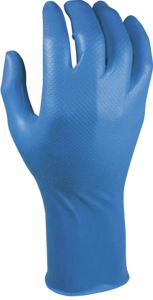 |
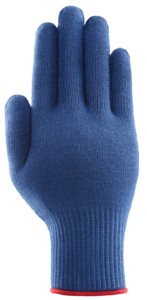 |
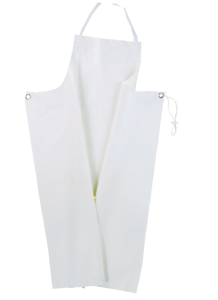 |
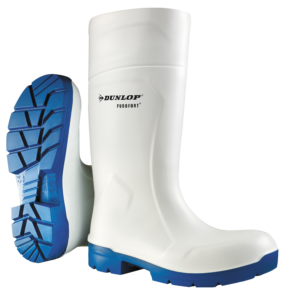 |
| OXXA® X-GRIPPAZ-PRO-LONG 44-545 GLOVE
Art. No.: 1.44.545.00 |
ANSELL ACTIVARMR 78-103 GLOVE
Art. No.: 1.90.786.00 |
SIOEN 8042 BRATISLAVA APRON 90 X 120 CM
Art. No.: 2.64.592.00 |
DUNLOP FOODPRO PUROFORT MULTIGRIP SAFETY BOOT S4
Art. No.: 5.30.102.00 |
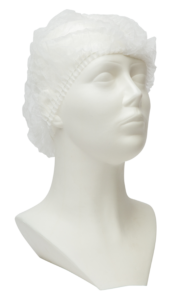 |
 |
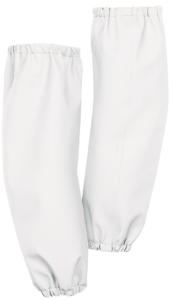 |
| OXXA® COVER 201 BARET
Art. No.: 6.32.022.01 |
UVEX ASTROSPEC 2.0 9164-065 SAFETY GOGGLES
Art. No.: 7.25.670.50 |
SIOEN 8161 CORK (KLEEN) SLEEVE
Art. No.: 2.65.682.00 |
Need help?
Would you like advice or additional information on suitable products for use in the food industry? Contact us today on T. +31 (0)181 47 50 00. Our enthusiastic team will be happy to tell you more!